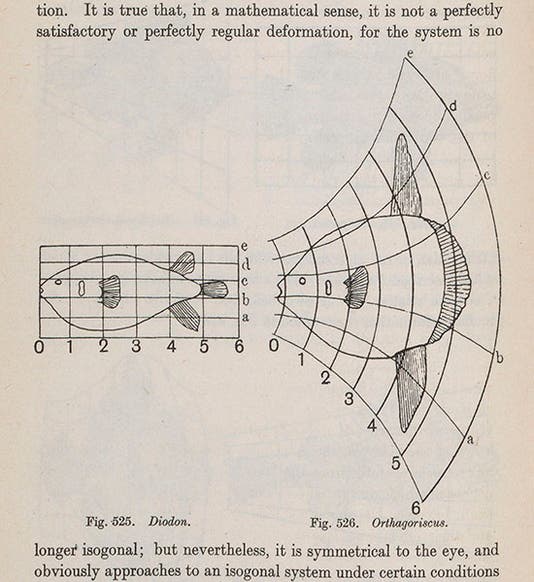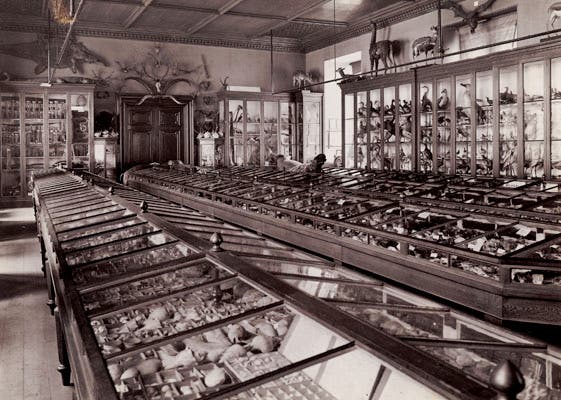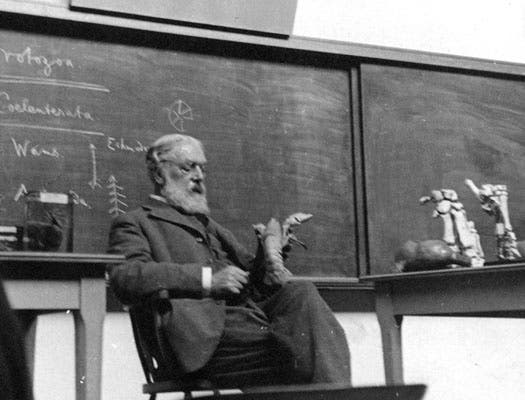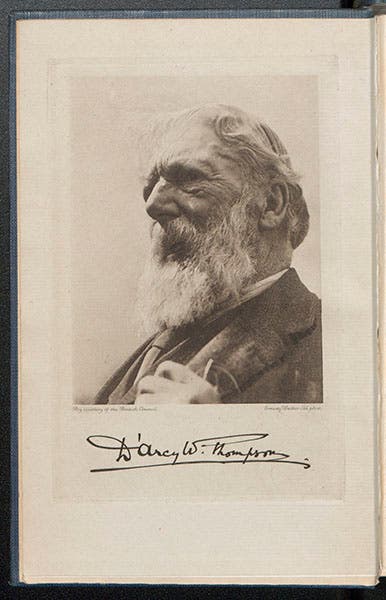Scientist of the Day - D’Arcy Wentworth Thompson
D'Arcy Wentworth Thompson, a Scottish zoologist, was born May 2, 1860. Thompson was Professor of Biology at Dundee for 32 years, and then moved to the University of St Andrews, where he held the Chair of Natural History for another 31 years. He was instrumental in both institutions in setting up or enlarging museums of natural history, both of which still exist, although the one at Dundee had to be revived and reconstructed (second image). Some of his original models have survived (fourth image).
Thompson is best known for a single book, On Growth and Form, which was published in 1917. I still remember running across a paperback edition of this book during my first semester of graduate school, when I was taking my first course on the history of evolutionary thought, and being absolutely blown away (as happens rather often to first-year graduate students). As the title suggests, Thompson believed that questions about form are really questions about development; things look the way they do because of growth patterns. His innovation was to apply physics and mathematics to help understand biological growth, or what we now call morphology. His statement that "no organic forms exist save such as are in conformity with physical and mathematical laws" would have been quite shocking to contemporary biologists.
Thompson used very clever graphical diagrams to demonstrate his points about growth; he showed how you can transform one animal into another by consistently deforming a graph. In one of his most famous examples, he morphed a porcupine fish into an ocean sunfish, just by allowing the rear end to grow faster than the front end (first image). Other illustrations show how to produce variations in crab carapaces, and copepods (third image).
In his pursuit of form, Thompson was more of an Aristotelian than a Darwinian, which is surprising to the modern reader. He was such an admirer of Aristotle that in 1910, he published his own translation of Aristotle's History of Animals from the original Greek. It is no wonder that Thompson is often called a polymath, with his mastery of biology, physics, mathematics, and the classics.
The University of Dundee and the University of St Andrews celebrated Thompson’s 150th birthday with an joint exhibition in 2010, and a webpage remains where you can learn more about this remarkable man.
Our images from On Growth and Form were taken from the second edition of that work, because we do not, surprisingly, have the first edition in our collections. We are trying to remedy that deficiency.
Dr. William B. Ashworth, Jr., Consultant for the History of Science, Linda Hall Library and Associate Professor, Department of History, University of Missouri-Kansas City. Comments or corrections are welcome; please direct to ashworthw@umkc.edu.











